Glendalough Monastic Site- Visiting One of Ireland’s Premier Monastic Settlements
Purchases made through links earn us a small commission, at no extra cost to you.
Tucked into a forested valley in the Wicklow mountains are the remains of Glendalough, one of Ireland’s most important monastic settlements. It’s an evocative site- ancient stone buildings surrounded by Celtic crosses and gravestones, while two lakes and a river flow nearby.
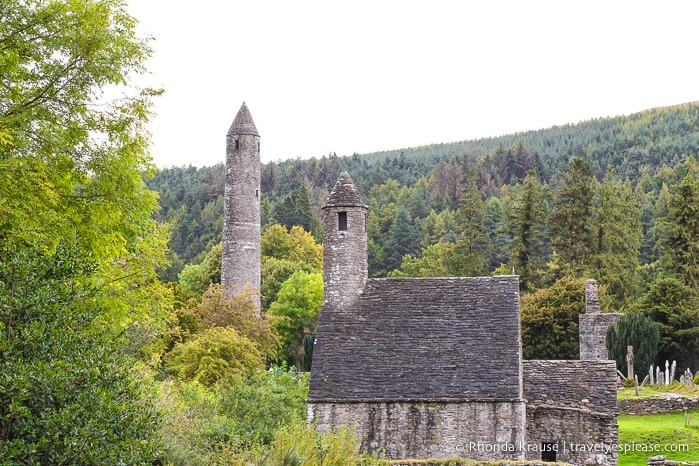
As the first stop on my Ireland road trip, Glendalough monastic site was the perfect introduction to the history and natural beauty that make Ireland so appealing. The allure of the timeworn ruins was rivaled only by the tranquil setting. Even groups of tourists milling about were unable to detract from Glendalough’s enchantment.
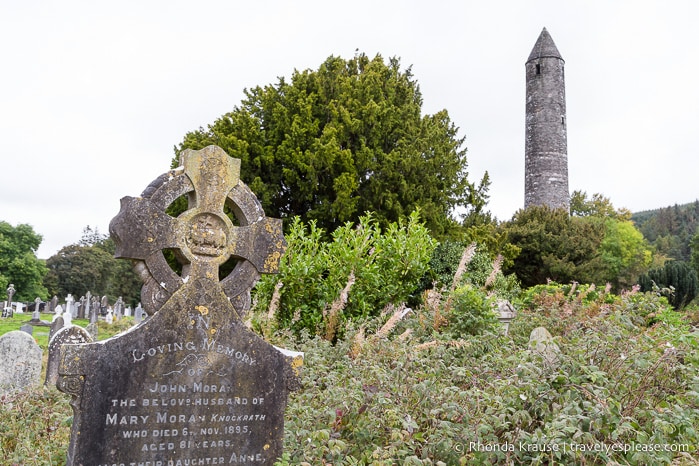
Before I share my visit to Glendalough, here’s a brief history of the monastic settlement in the “Valley of Two Lakes”.
History of Glendalough Monastic Site
Glendalough was founded in the 6th century by St. Kevin, a young monk who moved to the isolated area intending to live as a hermit among nature.
For seven years St. Kevin lived alone in a cave, a Bronze Age tomb now known as St. Kevin’s Bed. He slept on stones, wore animal skins, and ate very little.
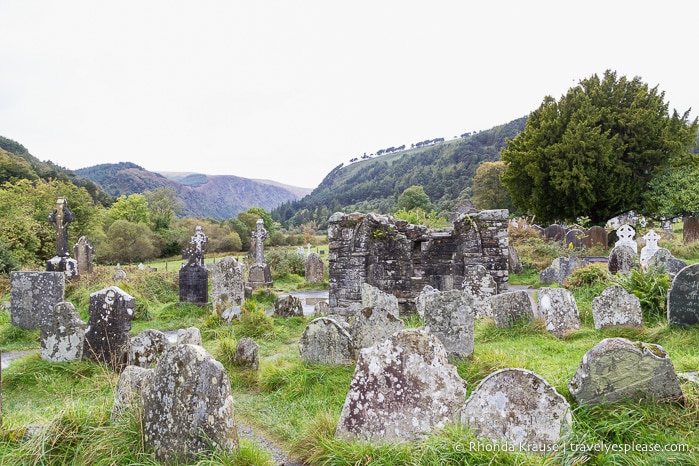
Perhaps to Kevin’s dismay, his lifestyle soon attracted a group of disciples who ironically established a settlement to be close to someone who wanted to be as far from others as possible.
As Kevin’s reputation as a teacher and holy man spread, the monastery at Glendalough continued to grow, even after his death in 618. By the 9th century Glendalough had become one of Ireland’s premier monastic cities.
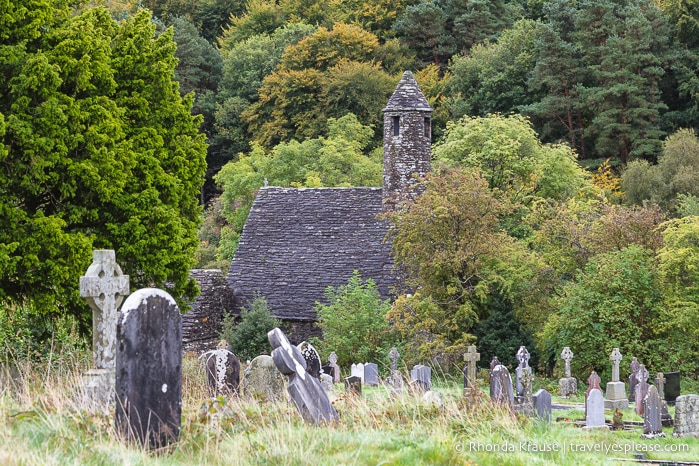
The success of Glendalough unfortunately made it a target for Viking raiders, who plundered the monastery numerous times. However, it was English forces who destroyed the settlement in 1398, leaving it in ruins.
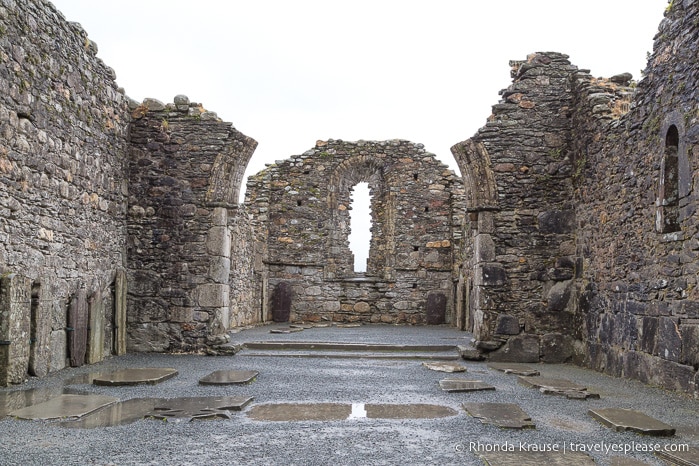
My Visit to Glendalough Monastic Settlement
My first glimpse of Glendalough was just the type of romantic scene I was expecting to see in Ireland. Beyond the bend of a shallow river was a small green hill upon which a stone church and round tower rose above the surrounding trees.
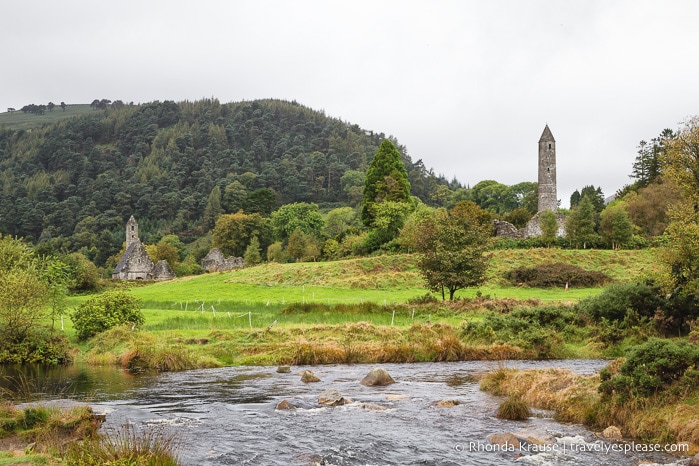
I couldn’t wait to see what else was hiding behind the gentle slope, so I quickly followed the path to the monastic site.
Upon arrival, I found a small area packed full of headstones and buildings from the 10th-12th centuries, some in ruins while others were remarkably intact. I loved wandering between the crosses and graves, attempting to read the worn headstones and imagine the stories of the people laid to rest there.
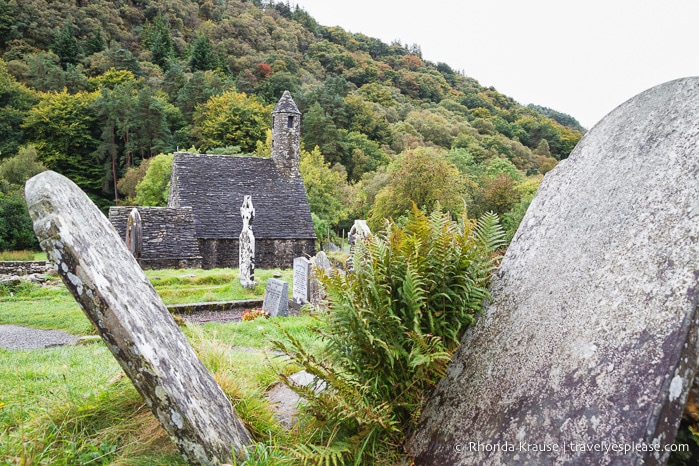
I lingered so long in the heart of the monastic settlement (near the Lower Lake), that I missed out on visiting the sites around the Upper Lake, where St. Kevin began living as a recluse.
Although I didn’t explore Glendalough as fully as I had planned, what I did see was enough to make it one of my favourite archaeological sites in Ireland!
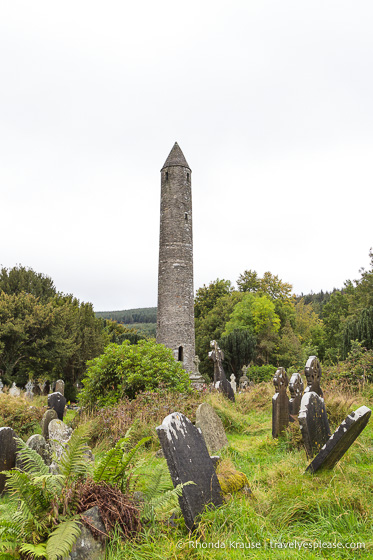
Tour of Glendalough Monastic Site
Here’s a look at my self-guided tour of Glendalough monastic settlement.
St. Kevin’s Church (a.k.a. St. Kevin’s Kitchen)
St. Kevin’s Church is a unique structure because it has a round bell tower sticking out of its roof. The tower was mistaken for a chimney, hence the nickname St. Kevin’s Kitchen.
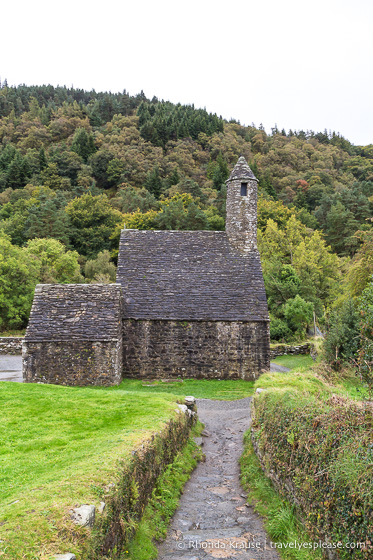
The church’s steep roof is made from overlapping stones and supported internally by a semi-circular vault. While you can’t enter the church, the gated doorway allows you to take a peek inside.
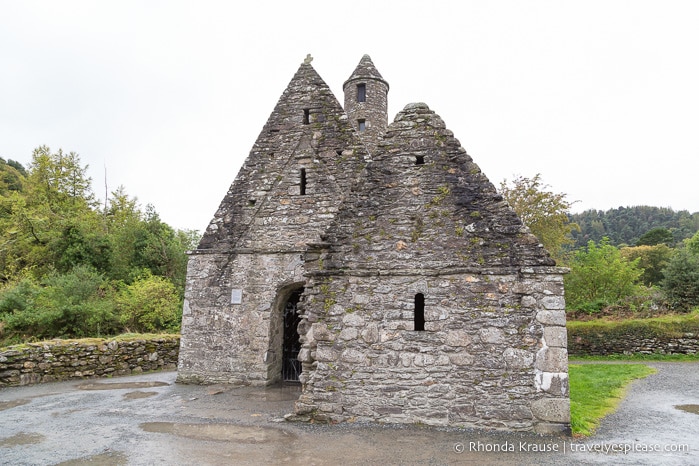
The Cathedral of St. Peter and St. Paul
My favourite building in the monastic city was the cathedral, the largest of the seven churches in Glendalough.
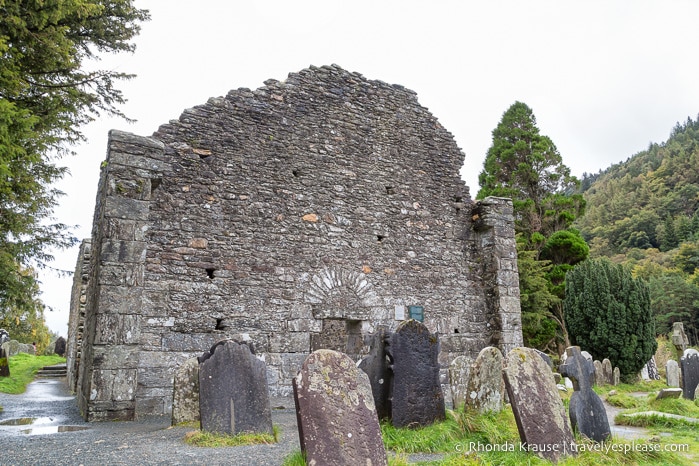
The cathedral was built in phases from the 10th through the 13th century, incorporating large stones from an earlier church. The roof was made of wood and no longer exists.
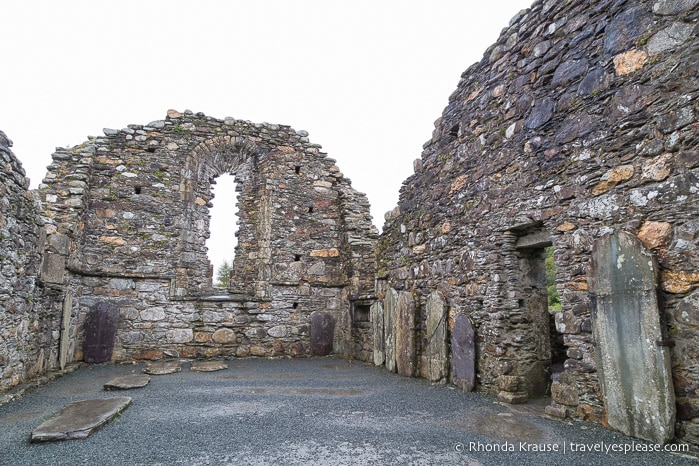
Inside you can see many grave slabs and the remains of a decorated arch. Even in its ruined state, the cathedral is a beautiful piece of architecture.
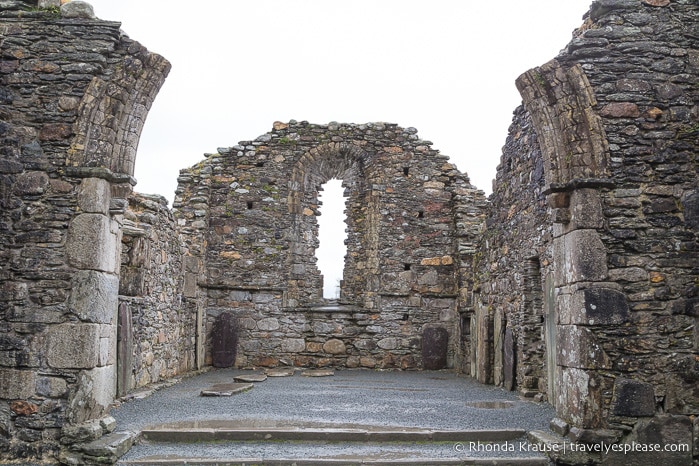
St. Kevin’s Cross
A few metres from the cathedral is St. Kevin’s Cross. Plain and carved from a single slab of local granite, the cross is combined with a circle representing the sun, a design intended to help pagans acclimate to Christianity.
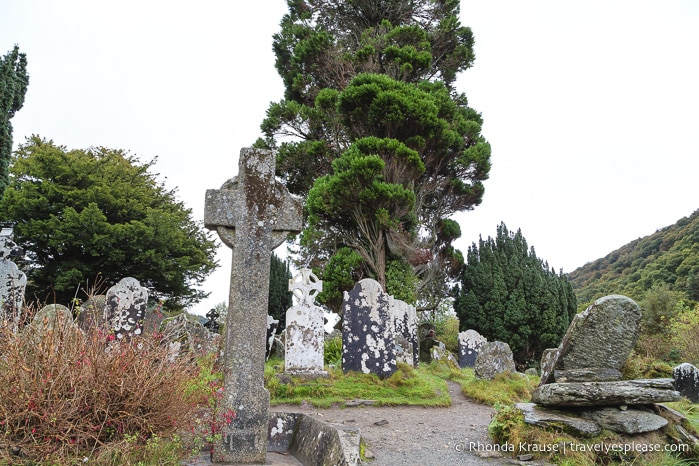
The Priests’ House
The Priests’ House is a small Romanesque building where the bodies of priests were interred during the 18th century.
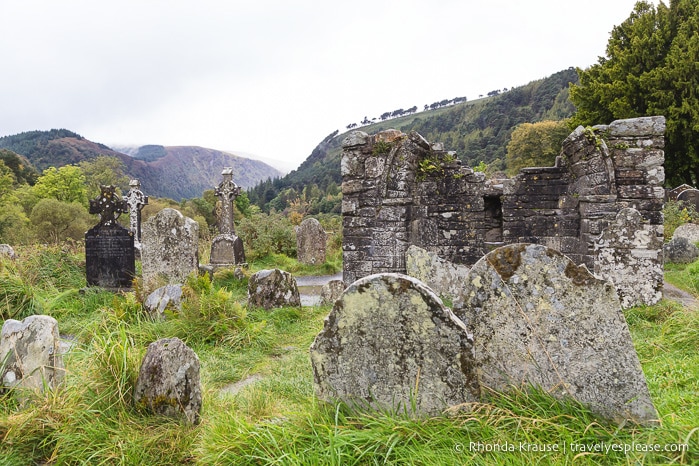
The original function of this room is not known, but it may have housed relics of St. Kevin.
Round Tower
The Round Tower at Glendalough is unmissable at 33 metres tall. It served as a beacon for approaching pilgrims, a lookout tower, and shelter for monks when the monastery was under attack.
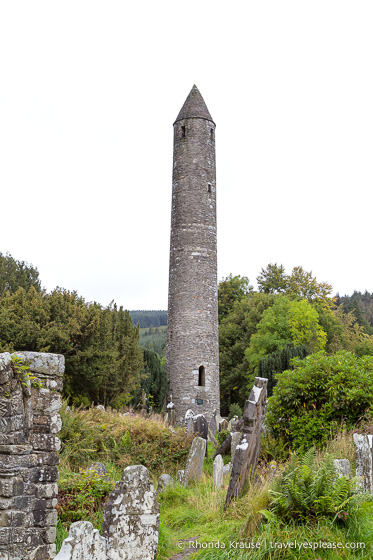
The most well-known landmark in Glendalough, the Round Tower exists largely as it did when first built 1000 years ago. The only thing that’s not original is the roof, which was replaced in 1876 after a lightning strike.
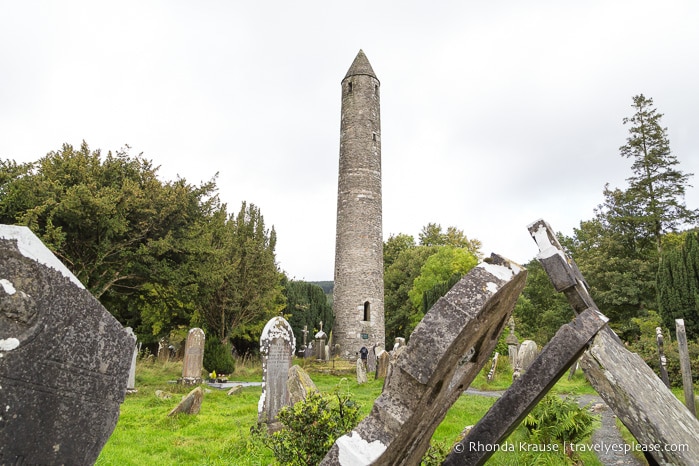
The Round Tower is undoubtedly an eye-catching structure, but the most interesting thing is the small entrance, which is 3.5 metres above the base. I guess that’s part of the reason why it made a good hideout during times of attack!
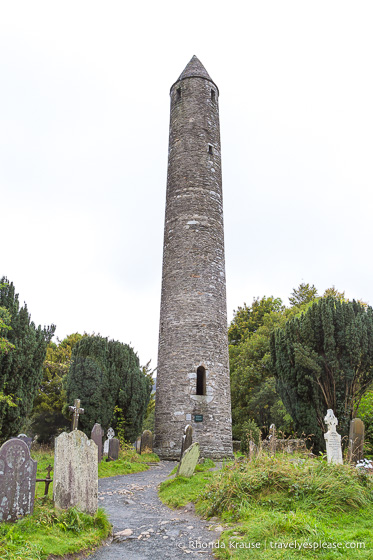
Final Thoughts About my Visit to Glendalough
It was easy to feel a connection with Ireland at Glendalough thanks to it having a favourite combination of mine- archaeology and nature.
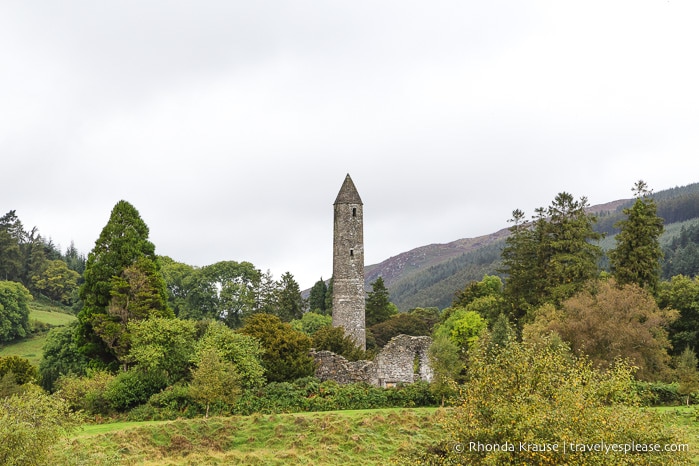
The buildings and decorated crosses in the monastic settlement were beautiful, even though the passage of time has left its mark. The soothing, serene scenery made it easy to see why solitude-seeking monks chose Glendalough as their retreat.
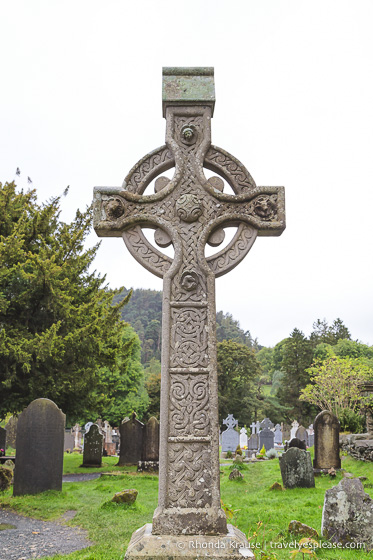
I wish I had spent more time in Glendalough, and in the Wicklow Mountains in general, instead of heading off to Kilkenny Castle. It would have been nice to do some walks in Wicklow Mountains National Park, so I definitely could see myself returning here one day to explore the area more in depth.
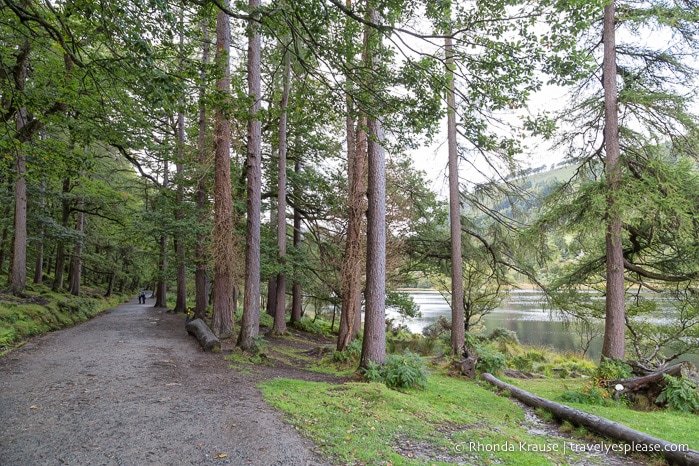
More Photos of Glendalough Monastic Site
Since the monastery is so photogenic, here are a few more pictures of Glendalough to enjoy!
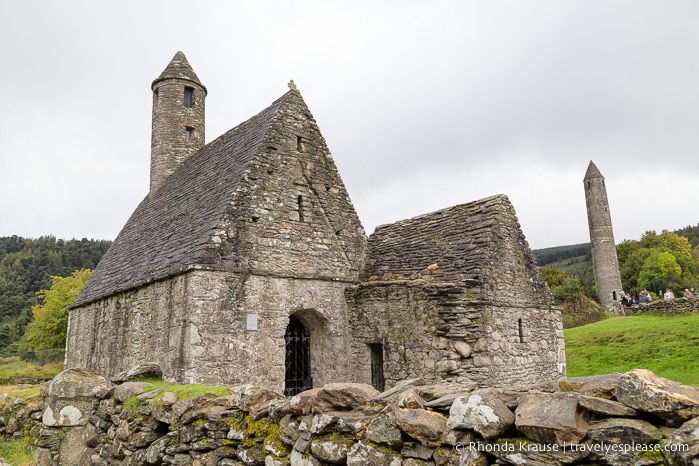
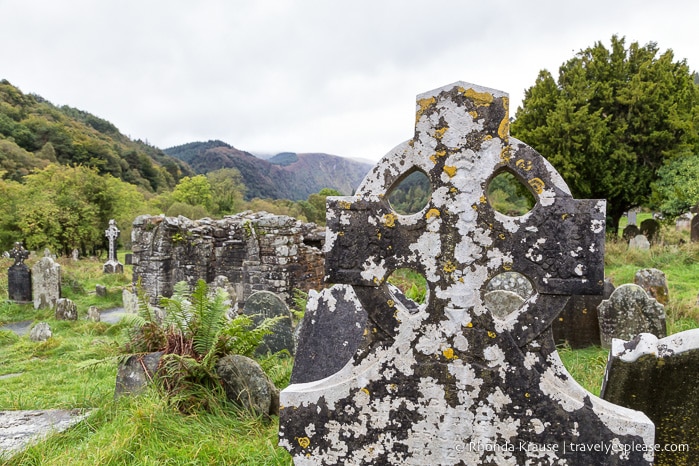
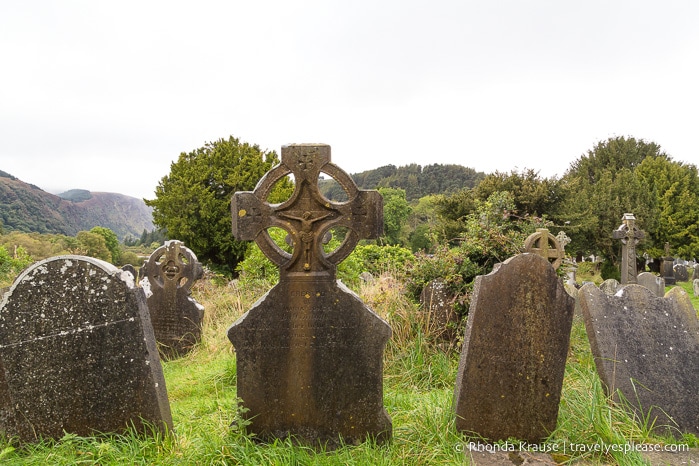
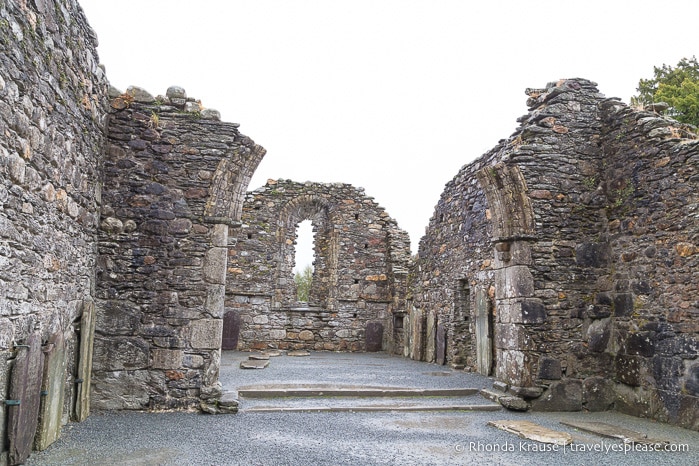
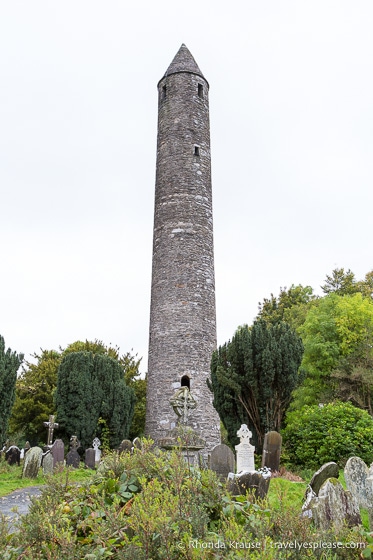
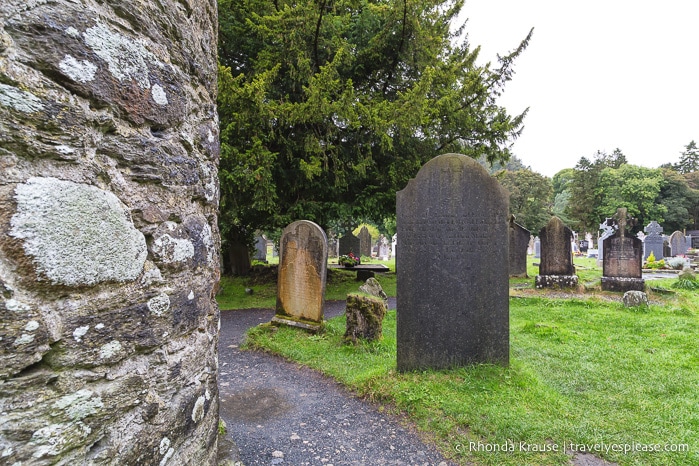
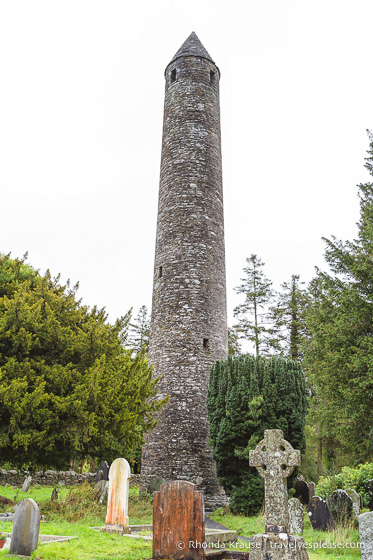
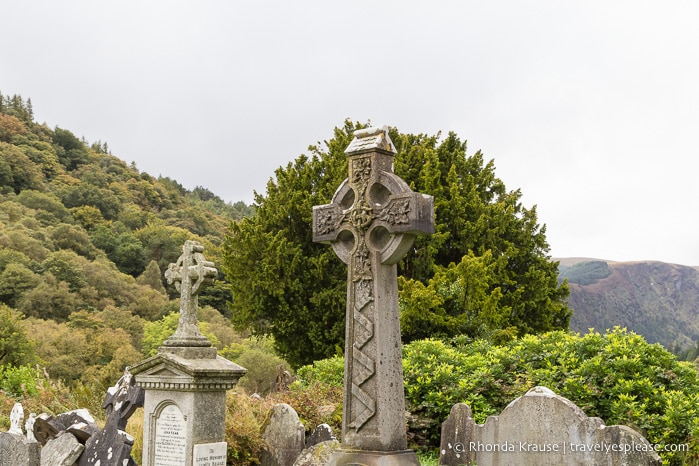
Tips for Visiting Glendalough Monastic Site
Location: Glendalough is located in County Wicklow and can easily be visited on a day trip from Dublin.
Getting There: For a scenic drive to Glendalough, take the Old Military Road (R115) through a remote region of the Wicklow Mountains.
Admission: There is no charge to visit the monastic site, but a small fee applies to the Glendalough Visitor Centre. Current prices can be found here. The car park at the visitor centre also charges a fee but this includes one free admission to the visitor centre.
Opening Hours: The monastery at Glendalough is accessible year round at any time of day, however the car park may have the barrier down in early morning and late evening. Opening hours for the Glenadalough Visitor Centre can be found here.
Where to Stay: The nearest town to Glendalough is Laragh.
Information was updated January 2025, but can change without notice. Please confirm directly with service providers.
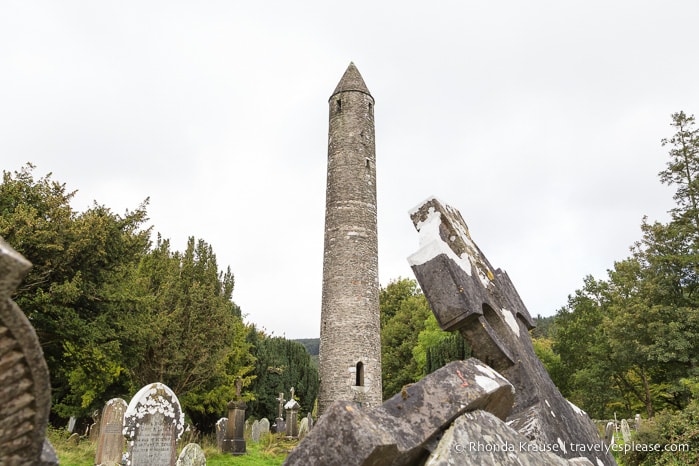
Tours of Glendalough
Here is a trusted site where you can book tours of Glendalough and the Wicklow Mountains leaving from Dublin.
Accommodations Near Glendalough
For your convenience, here is a list of hotels near Glendalough and Laragh. Please consider booking your Glendalough accommodations through the included link. It costs nothing extra and helps support this website. Thank you!
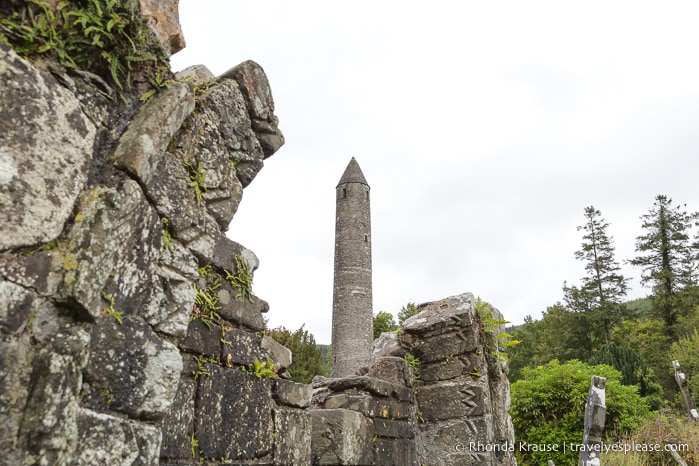
More Ireland Destinations and Travel Guides
- The Rock of Cashel- One of Ireland’s Most Magnificent Ancient Sites
- The Atmospheric Ruins of Hore Abbey
- Visiting Brú na Bóinne- Newgrange and Knowth Passage Tombs
- Long Room of the Old Library at Trinity College, Dublin
